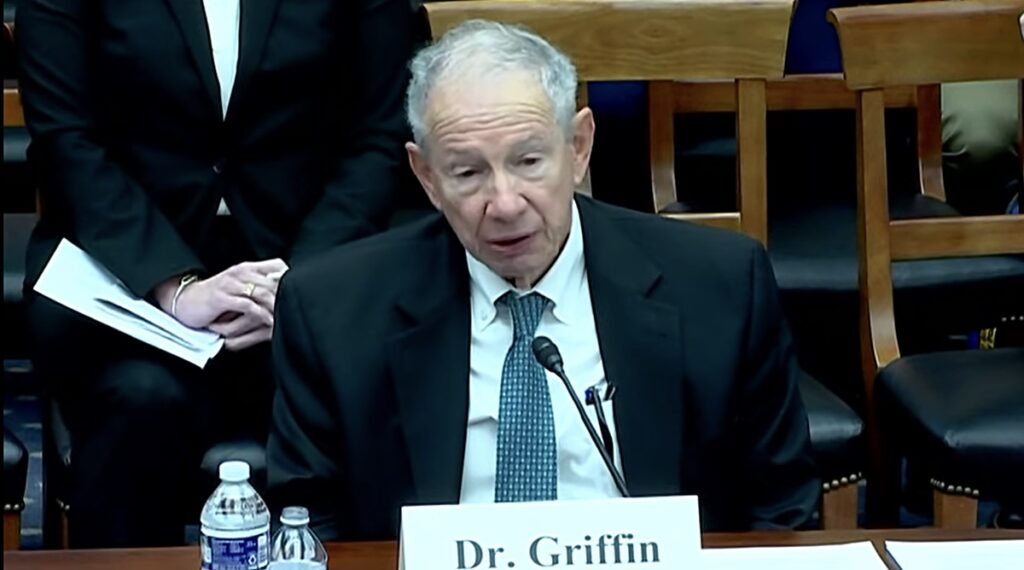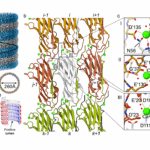Now Reading: Accelerating the path for commercial space integration (and implementation) remains a DoD and national security priority
-
01
Accelerating the path for commercial space integration (and implementation) remains a DoD and national security priority
Accelerating the path for commercial space integration (and implementation) remains a DoD and national security priority
Last year’s release of both the Department of Defense (DoD) “Commercial Space Integration Strategy” and the United States Space Force (USSF) “Commercial Space Strategy,” marked, for the first time, the Pentagon’s commitment to purposeful integration of commercial space capabilities into hybrid space architectures for national security missions.
These well-thought-out policies reflect the DoD’s understanding that the private sector’s know-how, innovation and speed are necessary to meet national security objectives, elevating the long-established relationship between the DoD and commercial space capability providers. Both strategy documents acknowledge the need to leverage commercial space capabilities to meet national security and resilience goals, as well as strengthen deterrence and achieve Combatant Command objectives.
Since the release of the strategies, we’ve seen incremental, positive progress toward achieving these goals. With the new administration now in the White House and driving its priorities forward, the DoD must remain steadfast in taking clear, focused and determined steps toward implementation and prioritize efficiency efforts that advance commercial space integration. As reports continue to show near-peer adversaries are rapidly advancing their space-based capabilities, the integration of commercial space capabilities is critical to our resilience and operational readiness around the globe.
Along the path to implementing these strategies, we must recognize the key areas likely to present challenges and opportunities for driving progress.
Achieve alignment across accountability, funding and mindsets
It all starts at the top. To address the fundamental challenge of improving the DoD’s approach to space domain acquisition, we must have dedicated, accountable leaders across multiple branches, not just in the USSF, designated to further align and implement the two strategies. These leaders must advocate, develop, track and monitor measures of effectiveness while ensuring the funding and direction required for execution. While we are hearing elements of this type of leadership from the Space Force Chief of Space Operations (CSO) Gen. Chance Saltzman, this accountability must also extend down through the ranks, as well as across the other military services.
Regarding the budget, there is currently no funding appropriated for executing these strategies. However, following reports the administration will issue new guidance to reform and speed up the Pentagon’s acquisition process and more recent directive to identify 8% of FY2026 spending to be redirected into new administration priorities, Space Force and DoD leaders will need to work with Congress to budget for necessary resources to enable U.S. military leadership in space, and ensure the new model is one that prioritizes efficiency with commercial capabilities as part of an integrated space architecture rather than building or expanding exclusively government-owned assets. This is essential to achieving the vision of a dynamic, resilient joint all-domain communications environment, enabling the secure transfer of data across military networks seamlessly and from any sensor or command center to any warfighter at the edge.
This shift speaks to the exigency of transforming legacy mindsets. There have always been debates over “commercial vs. government-owned,” but next-generation thinking must transition from an “acquiring a material solution” approach to a “building capabilities” with embedded commercial services as foundational to the integrated architecture.
Last May, the Defense Science Board noted in its “Commercial Space System Access and Integrity” report that government buying practices are suboptimal from an industry perspective because they separate user equipment from the service provided. “This approach has been described as transactional and not to the same level of efficiency or global reliability of commercially procured managed services,” according to the report. Instead of seeking new individual technologies, the accountable leaders must consider the full end-to-end and life cycle of space systems.
With SATCOM, for example, this means looking at all the components inclusive of satellites, ground segment and user terminals that ensure a fully operational system of systems necessary for a resilient integrated architecture. Recently, resiliency is perceived to be achieved primarily through proliferation of large constellations at a singular orbital altitude. Rather, a truly resilient network architecture is achieved through multiple suppliers, orbits, frequencies and a distributed ground architecture. This type of multi-orbit, hybrid architecture reduces risk while increasing resiliency through cost-effective and diverse communications routes.
Assess requirements against existing commercial capabilities
In 2022, USSF’s first CSO Gen. John “Jay” Raymond made it clear that he intended to veer from the norm on acquisition strategies: “Exploit what we have, buy what we can, build what we must,” he said. Space Systems Command have expressed strong support for this Exploit, Buy, Build mindset, but current practices have not yet caught up with this stated approach.
Current CSO Saltzman has furthered this philosophy with added emphasis on the criticality of operation and the vision to publish the USSF Commercial Space Strategy. Following the DoD CSIS, the USSF strategy states the government does not have to own and operate absolutely everything, and commercial operators should own a great deal of the essential capabilities and components. It’s imperative – and now mandated through a recent Executive Order – to understand which commercial capabilities are available today and invest in those and then consider government-specific capabilities only as necessary.
Time is of the essence, so what’s next?
The USSF is doing an admirable job of raising broader awareness and visibility into space-based threats from adversarial nations. But we need to move forward now to keep pace and counter our global adversaries in space.
Embracing the philosophy of “perfect is the enemy of good enough” – especially regarding commercial capabilities — will give the government more optionality, and in most cases, a far more robust, assured and resilient solution.
DoD and USSF leaders need to keep driving commercial integration and ensure accountability down through the ranks. These leaders must then work with Congress to align applicable space priorities, putting the testing and adoption of innovative and emerging commercial capabilities ahead of bespoke government-built solutions. And, ultimately, all procurement stakeholders need to play their role in rapidly accelerating the implementation of processes to fund, acquire, test, practice and integrate operationally relevant commercial space services — long before an actual crisis emerges.
We can ill afford to lapse into analysis paralysis. Nor should we wait for “perfect” solutions because such delays will increasingly harm our ability to keep pace with adversaries and support specific mission needs, broader national security operations and the safety of U.S. and allied warfighters operating around the world.
Rebecca Cowen-Hirsch is Senior Vice President of Government Strategy & Policy at Viasat.
SpaceNews is committed to publishing our community’s diverse perspectives. Whether you’re an academic, executive, engineer or even just a concerned citizen of the cosmos, send your arguments and viewpoints to opinion@spacenews.com to be considered for publication online or in our next magazine. The perspectives shared in these op-eds are solely those of the authors.
Stay Informed With the Latest & Most Important News
Previous Post
Next Post
-
 012024 in Review: Highlights from NASA in Silicon Valley
012024 in Review: Highlights from NASA in Silicon Valley -
 02Panasonic Leica Summilux DG 15mm f/1.7 ASPH review
02Panasonic Leica Summilux DG 15mm f/1.7 ASPH review -
 03How New NASA, India Earth Satellite NISAR Will See Earth
03How New NASA, India Earth Satellite NISAR Will See Earth -
 04And Thus Begins A New Year For Life On Earth
04And Thus Begins A New Year For Life On Earth -
 05Astronomy Activation Ambassadors: A New Era
05Astronomy Activation Ambassadors: A New Era -
 06From Polymerization-Enabled Folding and Assembly to Chemical Evolution: Key Processes for Emergence of Functional Polymers in the Origin of Life
06From Polymerization-Enabled Folding and Assembly to Chemical Evolution: Key Processes for Emergence of Functional Polymers in the Origin of Life -
07SpaceX launch surge helps set new global launch record in 2024





















